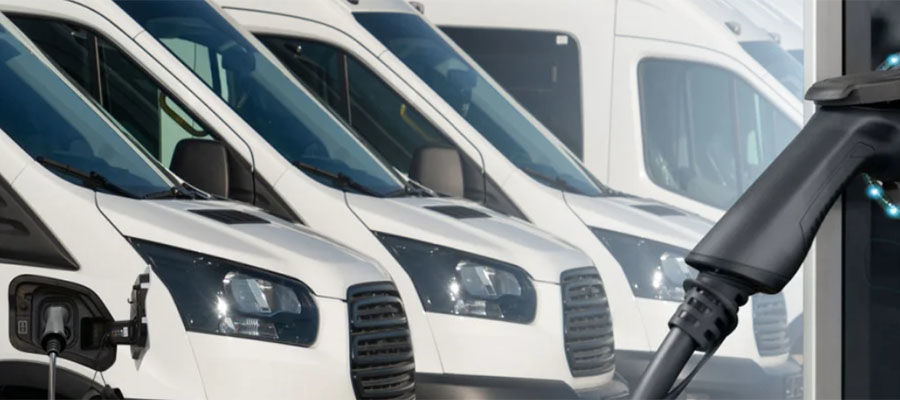Powering Your Commercial Electric Vehicles


Powering Your Commercial Electric Vehicles
SPONSORED CONTENT
Commercial electric vehicles (EV) aren’t just a concept of the distant future anymore as companies are already adding light and medium-duty EVs, like electric vans to their fleet. And heavy-duty electric vehicles aren’t far behind.
As companies are optimistic about the environmental benefits and brand boost achieved by commercial EVs, there are barriers hampering the full acceptance of electric vehicles. This includes how the vehicles are going to be maintained, as well as how and where they will be charged.
According to the study Curve Ahead: The Future of Fleet Electrification, the top motivators for companies to add electric vehicles to their fleet are sustainability and environmental goals. Conversely, two of the top four barriers are a lack of public chargers and inadequate electric capacity at a company’s facility.
When implementing EVs into a fleet, the first vehicles that a business converts to electric are simpler, as buildings usually have spare electrical capacity for a small number of units. However, once a company exceeds this capacity, it would need to engage in mitigating energy usage in their buildings, create smart charging solutions, or expand capacity.
Expansion of capacity involves utility company upgrades that are complex, expensive, and create delays in implementation, which is why providers like Ryder are focused on providing most companies with solutions “behind the meter.”
Just as companies don’t go into business to manage their transportation assets, they don’t go into business to wrangle with energy infrastructure. However, providers like Ryder leverage relationships with original equipment manufacturers and solutions companies to work with and understand how advanced vehicle technologies can be best implemented into a company’s portfolio so that customers can focus on what creates revenue and margin for them.
The business of energy charges forward
Like the transportation industry, the energy sector is evolving faster than it ever has before, no matter if you are looking into buying or leasing electric vans or heavy-duty vehicles. And, while many corporate and municipal leaders see energy as a fixed cost of doing business instead of an asset to be flexed, in many power markets, there are increasing options to monetize energy assets. Commercial vehicle charging infrastructure is one of them.
Even more enticing for businesses is that because of providers like Ryder, investing in assets such as energy does not require deep expertise or even a dedicated energy manager. With a keen focus on innovation and technology, combined with its entry into the electric vehicle market, Ryder has made it easy for companies to adopt sustainable, advanced vehicle technologies.
Additionally, because of Ryder’s research and development efforts, it eliminates the need for companies to use capital on such expenses and makes it easier for these businesses to adopt electric vehicles and the infrastructure needed to power them.
Taking charge and building a sustainable fleet solution
Just as Ryder has positioned itself as a leader in advanced vehicle technology, our electric vehicle strategy through RyderElectric+ doesn’t end with the vehicle. It’s the risk mitigation model that we have built that’s making it so attractive to companies like FedEx, La Tavola, and W.B. Mason to work with us to adopt new technologies.
With more than 1,150 electric and hybrid electric units in operation and on order, we will continue to lead the way to commercial fleet electrification and find innovative solutions that allow companies to take charge of their sustainability goals.
We have done the homework and can implement the right EV solution to meet a company’s specific needs. This process of continually evaluating the best options allows companies to break down the barriers associated with adopting electric vehicles.
This is an exciting time for the commercial transportation industry. While questions abound, solutions are being created because of the focus on electric vehicles and how to charge them. And as a result, companies will be able to meet environmental and sustainability goals, while boosting their bottom line.
First published on Ryder.com
Published on: January 23, 2024







